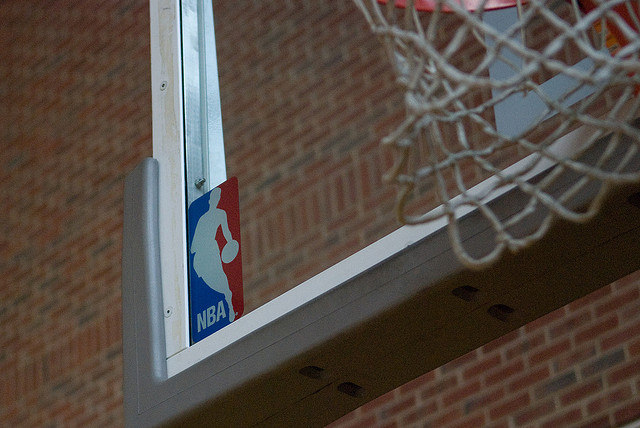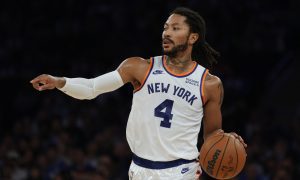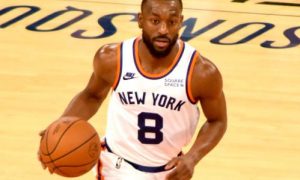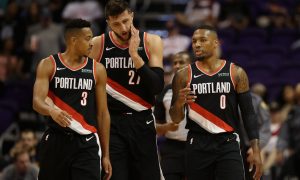On Veterans Day, two kindred spirits of the modern NBA—the Utah Jazz and the Denver Nuggets—collided in the first of four annual encounters. These clubs entered that meeting with a single win between them, the Nuggets sitting at 1-4 and the Jazz 0-7. Both were, in the earliest part of the season, meeting pessimistic projections: Nuggets coach Brian Shaw was struggling to find the right rotations to transform George Karl’s high-speed offense into a more conventional outfit, and the new-look Utah Jazz were mired in inexperience, with a stunning eight players at career highs in minutes played.
In many ways that first meeting provided a window into the state of these two would-be rivals. Without a clear identity, the Nuggets relied heavily on the poise of Ty Lawson and Andre Miller as well as the hustle of their big men, particularly Kenneth Faried and J.J. Hickson. The Nuggets unequivocally controlled the boards but lacked much in the way of perimeter shooting or successful post play. As for Utah, the non-Gordon Hayward ball handlers on the Jazz shot 6-of-28 from the field, an atrocious and untenable number. Perimeter play has been an issue in Utah for the last several seasons, and while Hayward has blossomed into a quality starter, it was clear then as it is now that it cannot come from him alone.
The month between meetings saw some changes for these two clubs. The Jazz inevitably improved on their 0-8 record, winning five and losing 11 during the layover. Injured rookie point guard Trey Burke returned, forcing the struggling John Lucas out of the rotation, and veteran forward Marvin Williams was moved into the starting lineup. The Nuggets experienced an even more dramatic transition, winning 11 of 15 and tightening up their own lineup by moving the inadequate Anthony Randolph out of the rotation, demoting Evan Fournier along with him, and returning injured forward Wilson Chandler.
And then, on Friday, December 13, they met again.
The Jazz’s perimeter issues were a distant memory in the early going of this one, with Hayward, Williams and Richard Jefferson shooting a combined 4-of-4 from deep in the opening minutes. The Jazz were less interested in posting up Derrick Favors than they’d been in the first meeting, and instead unleashed a slew of long jumpers on the Nuggets. Denver moved the ball well, with Ty Lawson looking to score and the big men showing their versatility, but poor shooting and some bad turnovers left Denver down 10 approaching the end of the first.
And then Denver raised the intensity, shined a very bright light on the talent gap between these clubs’ respective bench units, and went on a 7-2 run over the span of the quarter’s last 90 seconds. On consecutive possessions, Jordan Hamilton lost Alec Burks on a screen for an open three, Timofey Mozgov bullied Enes Kanter down low for an easy lay-in, and Andre Miller slipped a bounce pass through a trap for an open Darrell Arthur jumper. Utah’s lead was abruptly cut to five.
The Jazz and the Nuggets shot a combined 1-of-8 to start the second, the single basket an absurd off-balance jumper by Nate Robinson. Utah simply didn’t know what to do with Denver’s defensive intensity, and while the Burke/Burks backcourt couldn’t get to the line despite its very best efforts, the Jazz’s ownership of the offensive glass during this stretch allowed them to maintain control of the game. Substitutions mid-way through the quarter were expected to shake the game loose but poor shooting would characterize the rest of the half, and Utah went into the intermission up nine.
More sloppy play dominated the second half. Chandler got a little lost under the basket and was called for a defensive three-second violation, early whistles slowed the rate of play, and the Jazz crept out to a 16-point lead. One sequence in the third quarter: consecutive Denver misses mercifully halted by a Hayward foul, a foul called on Chandler at the other end, a Jefferson turnover, a kicked ball by Favors, Chandler forcing and missing a well-defended three, foul on Arthur, foul on Robinson, a missed Hayward jumper, and the whole sad sequence thankfully ended by a Mozgov dunk. Two solid minutes of why casual fans ridicule early-season NBA basketball.
It’s worth noting that this was Lawson’s first game back after a two-game absence, and he looked like a different player than the one who controlled the game on Veterans Day. Lawson stopped looking for his own scoring early on, leaving Denver’s offense rudderless. After Lawson was subbed out midway through the third, Denver promptly went on a 20-4 run over the hapless Jazz, finding their first lead since being up 4-3. Despite some momentum on Denver’s side, and Utah’s lineup seemingly flustered, the Jazz got through the rest of the third with only a two-point deficit to overcome.
Denver extended the lead to four with about nine minutes to play when Hayward and Jefferson were put back into the game. They would combine for 15 points and four rebounds the rest of the way. Denver’s bench returned to its first-half form after overcoming a huge deficit in the third, struggling to score and gradually ceding control of the game back to the Jazz. Up three with two to go, the Jazz got an and-one from Favors, stopped Denver at the other end, and put the game out of reach with a pair of Hayward free throws. Utah most unexpectedly steals one on Denver’s home floor.
Both teams are still where anyone would have reasonably expected to find them early in the season. Denver is undergoing a dramatic overhaul in roster and style and is going to look to a handful of players’ strengths to get them through early games. Utah is prioritizing their youth, and while Hayward, Favors, Burks, and Burke are living up to most reasonable expectations, the rest of the roster is too bare to expect much in the way of victories.
These two franchises, isolated from much of America’s view, staples in their respective communities, with mid-market resources and a strong commitment to winning, are both navigating a wide bend from their strong and stable histories toward what can only be described as uncertain futures. But they are two terrific franchises, in the early stages of a rebirth. One can hope it won’t be this dark for long.
Image courtesy of Josh Hallett.



















